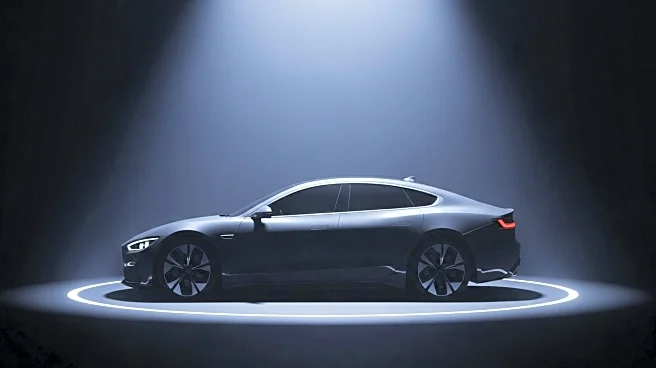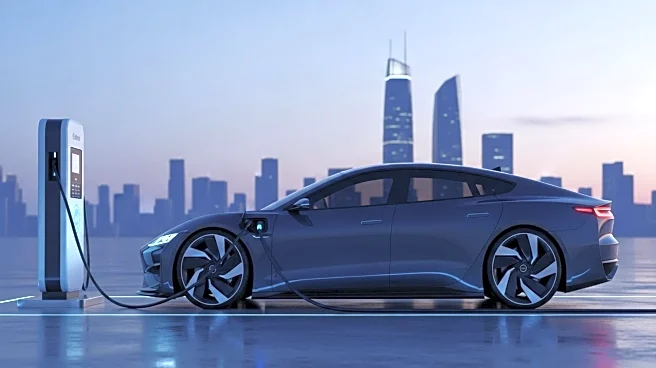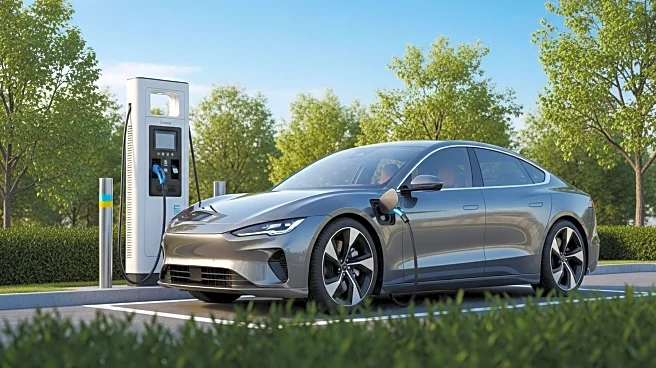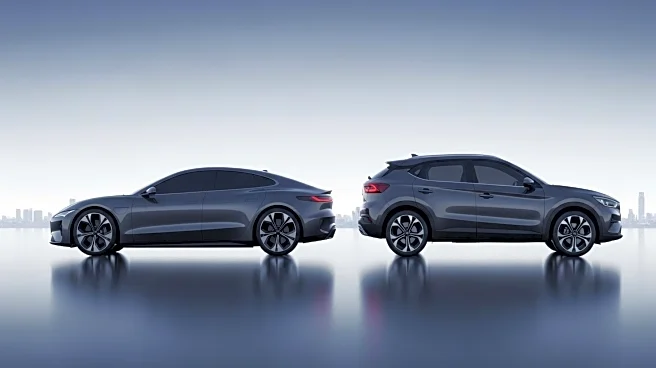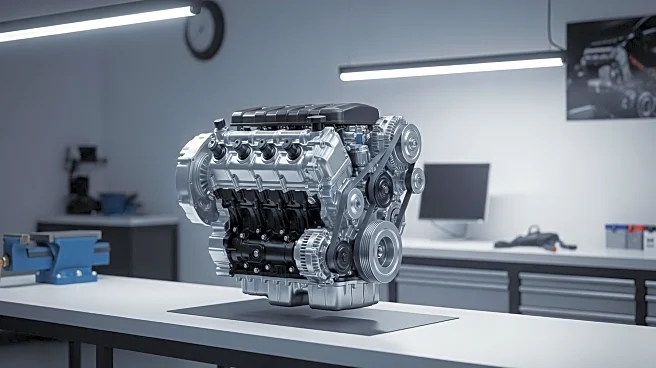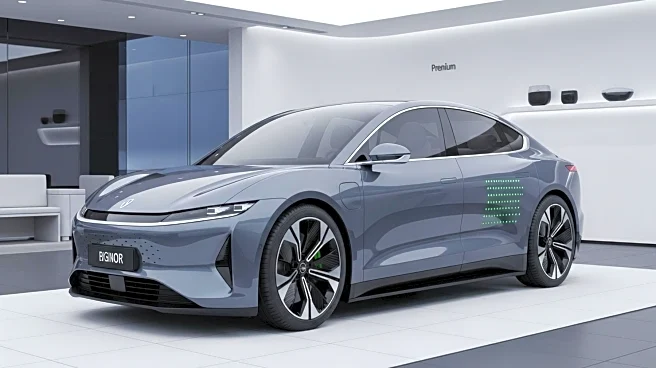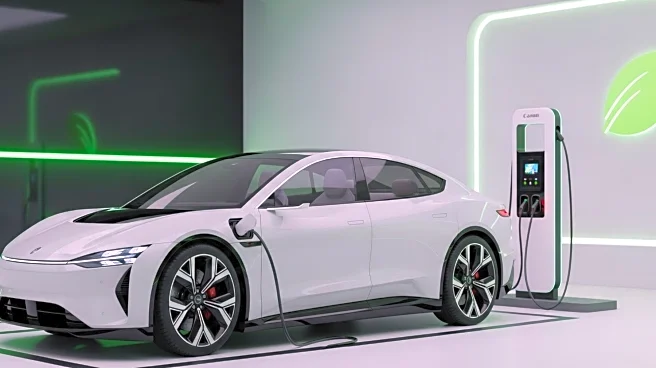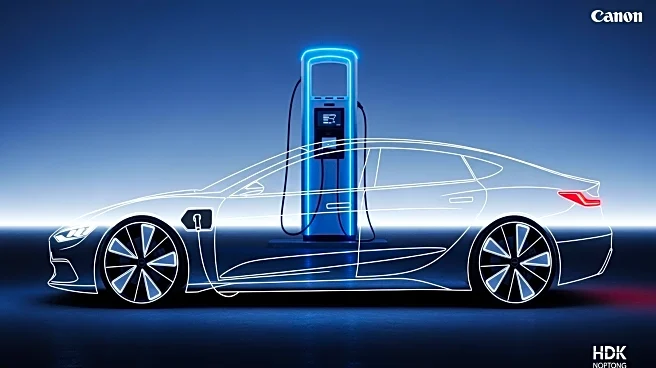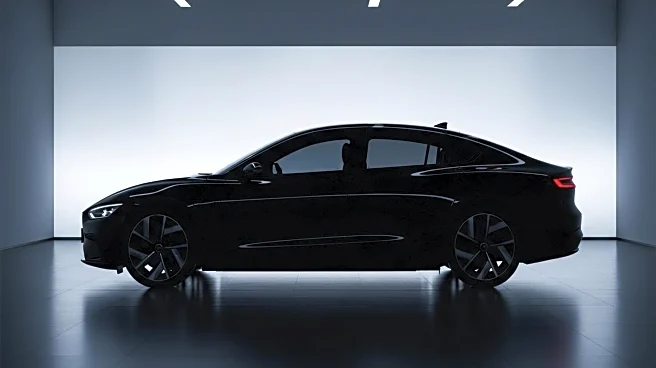What's Happening?
In July 2025, global plugin vehicle registrations reached 1.6 million, marking a 19% increase compared to the previous year. Battery Electric Vehicles (BEVs) saw a significant growth of 31% year-over-year, totaling over 1 million units, while plugin hybrids increased by 2% to around 600,000 units. This growth was largely driven by the Chinese market, which favored BEVs. Tesla's Model Y was the top-selling EV model, with 89,000 registrations, benefiting from a sales rush in the U.S. ahead of subsidy changes. Despite this, Tesla's Model 3 saw a decline in sales, dropping 14% to 29,000 units. BYD maintained its leadership position, although its market share slightly decreased from 17.3% in June to 17.1% in July.
Why It's Important?
The increase in global EV sales highlights the growing shift towards electrification in the automotive industry, with plugins representing 26% of the overall auto market. This trend is significant for U.S. manufacturers like Tesla, which are competing in a rapidly evolving market. The rise in EV sales is likely to influence public policy and investment in infrastructure to support electric vehicles, such as charging stations. Companies that adapt to this shift stand to gain market share, while those slow to transition may face challenges. The competition between established brands and emerging startups could lead to innovation and more consumer choices.
What's Next?
As the EV market continues to grow, manufacturers are expected to focus on expanding their offerings and improving technology to capture more market share. Tesla and other companies may need to strategize to maintain their positions amidst increasing competition from Chinese startups and legacy OEMs. The upcoming changes in U.S. subsidies could impact sales dynamics, prompting manufacturers to adjust pricing and marketing strategies. Additionally, the development of infrastructure to support EVs will be crucial in sustaining growth.
Beyond the Headlines
The shift towards electric vehicles raises ethical and environmental considerations, such as the sourcing of materials for batteries and the impact on traditional automotive jobs. Long-term, this transition could lead to significant changes in urban planning and energy consumption patterns. The competition between global and local manufacturers may also influence international trade policies and relations.
